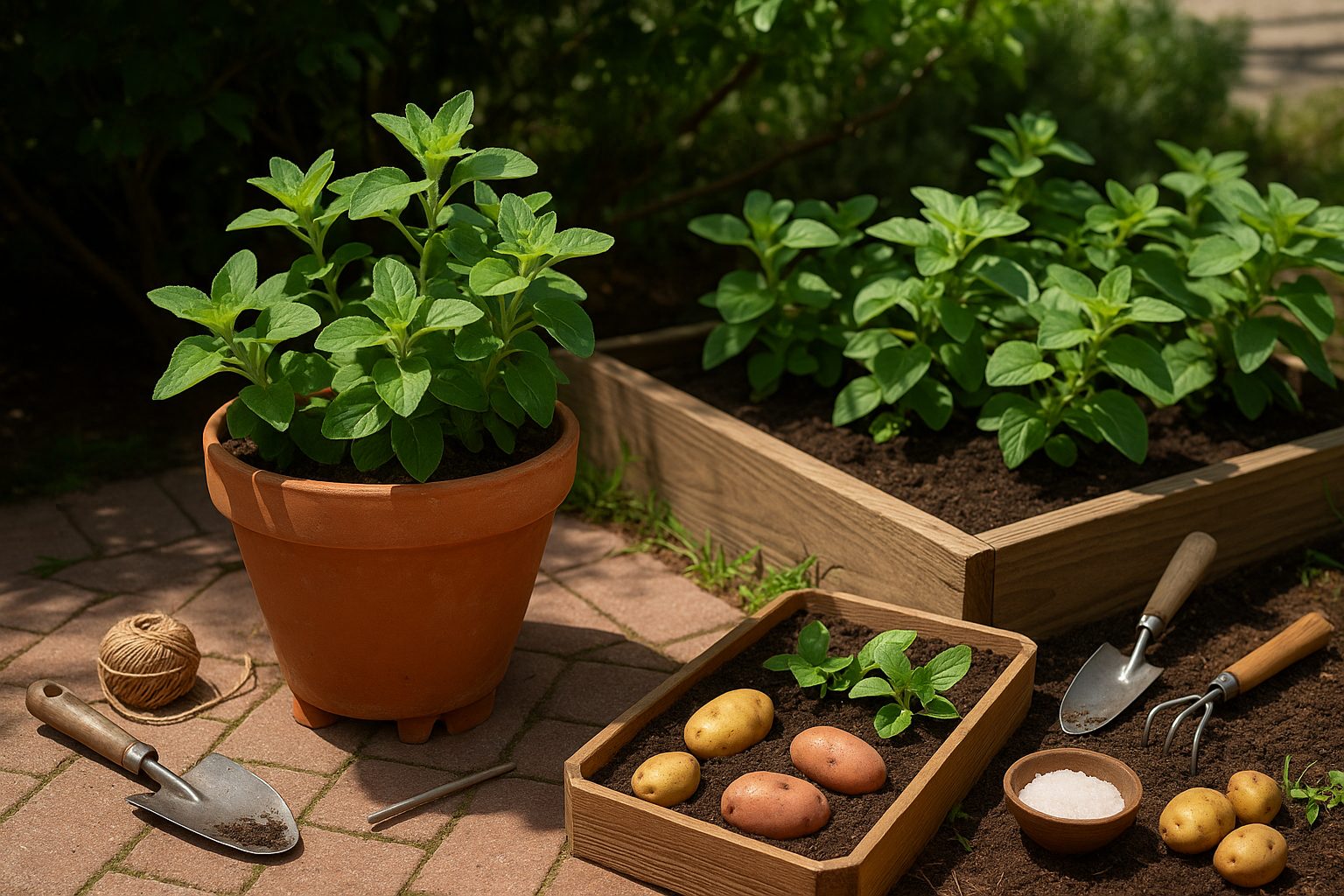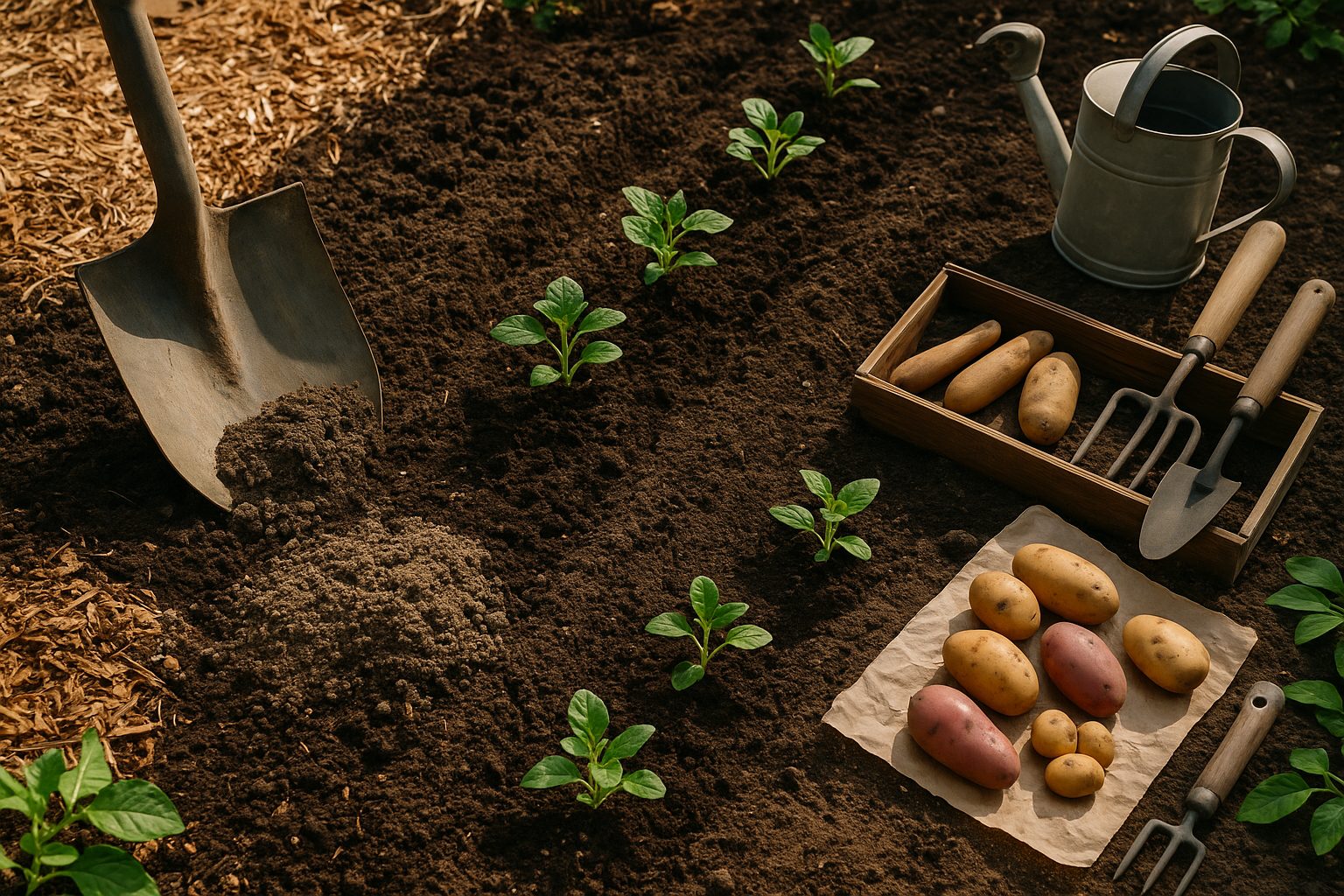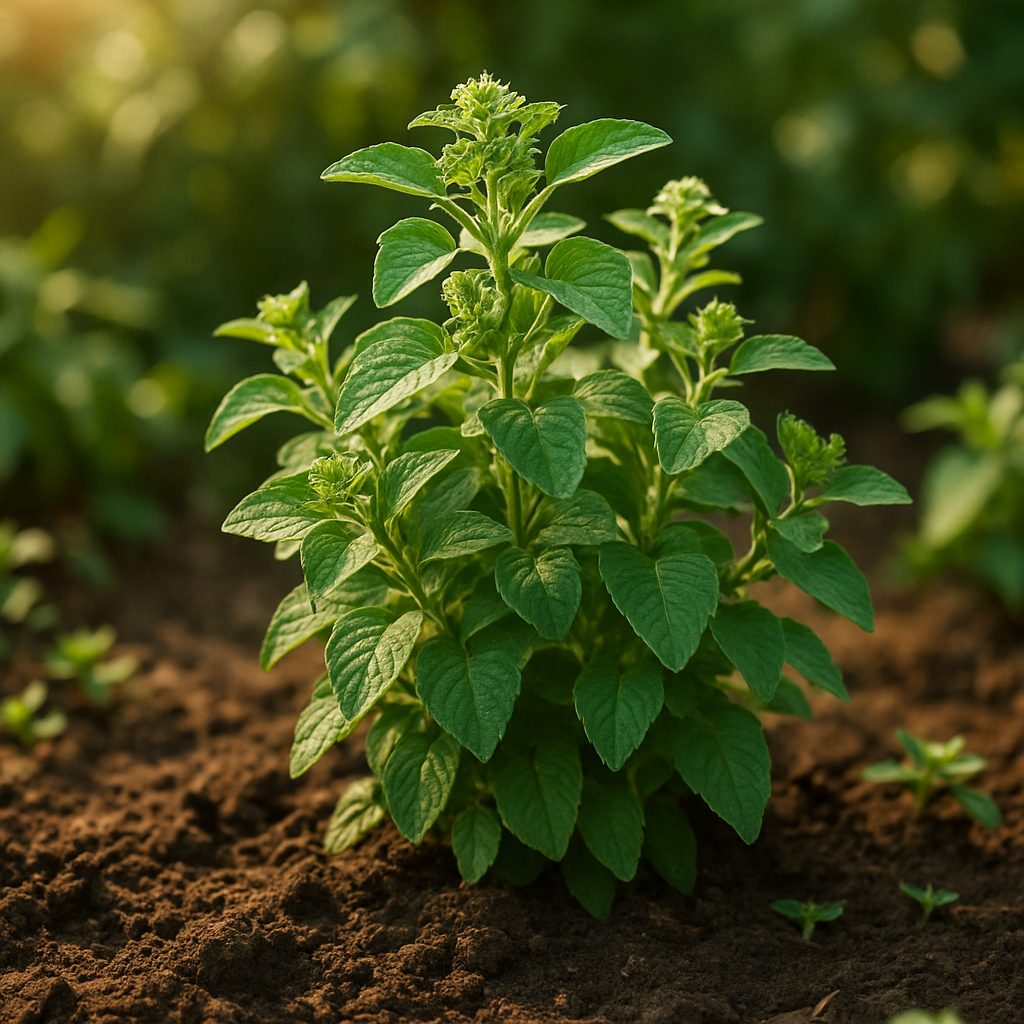Choosing the Right Location & Container vs. Outdoor Growing

Pruning Mexican oregano is a simple yet powerful technique that encourages bushier, healthier growth—even more so when you’ve carefully chosen where and how to grow your plants. Both Poliomintha longiflora and Lippia graveolens appreciate a location that matches their native warm, semi-arid environments, but the best setup for you often depends on your local climate. If you live in regions with mild winters and long, hot summers, Mexican oregano thrives outdoors, especially in garden beds where roots have room to spread. However, if heavy frost or excessive rainfall are common in your area, container growing lets you move plants to a sheltered or sunny spot as needed.
Mexican oregano loves full sun, producing its most flavorful leaves and plenty of blooms with at least six hours of sunlight daily. Still, these plants will tolerate partial shade, especially in scorching climates, making them versatile for balcony gardens or south-facing patios. For the healthiest growth, select spots that offer shelter from harsh winds and provide excellent drainage—soggy roots can lead to rot faster than you think. Raised beds or well-amended garden soil in a spot protected from strong gusts are perfect outdoor choices, while containers should have large drainage holes and be placed on bricks or pot feet to prevent standing water.
Choosing between container and in-ground growing depends on your space and climate control needs. Containers offer flexibility, making it easy to reposition your Mexican oregano for maximum sunlight or to bring it indoors during cold snaps. They’re also great for small urban spaces or renters. However, pots can limit root expansion and dry out quickly. Outdoor planting, on the other hand, allows for vigorous root systems and less frequent watering, but you’ll need to ensure your soil drains well and remains protected from winter chills. No matter your method, combine good site selection with smart pruning to coax out lush, bushy growth all season long.
Soil Preparation & Planting Techniques

Starting with the right soil is vital for healthy plants. Most vegetables and ornamentals thrive in well-drained sandy or loamy soil, which offers a good balance of drainage and nutrient retention. If your native soil is heavy clay or overly sandy, don’t worry—improving it is straightforward.
Begin by removing weeds and working the top 8 to 12 inches of soil using a shovel or garden fork. Mix in 2 to 4 inches of compost or well-rotted manure to boost organic matter and nutrients. For clay soils, adding coarse sand or perlite can also help improve drainage.
Once your soil is ready, carefully plan your planting layout. Check seed packets or plant tags for recommended spacing, as overcrowding can lead to poor air circulation and disease.
When sowing seeds, plant them at a depth about twice their size and gently pat the soil, keeping it moist but not waterlogged. For transplants or cuttings, dig a hole just large enough to accommodate the root ball. Set the plant so its crown is level with the soil surface, then firm the soil around it and water well.
Starting from seeds indoors lets you get a jump on the growing season, while cuttings can be rooted in a mix of perlite and peat before transplanting outdoors. Alternatively, buying healthy young plants from a local nursery is a quick way to fill gaps or kickstart your garden.
No matter the method, focusing on amending your soil and planting with care lays the groundwork for successful growth all season long.
Watering and Fertilizing
When it comes to watering, many garden plants—especially those labeled as drought-tolerant—prefer a deep soak every seven to ten days once they’re established, rather than frequent shallow waterings. This encourages their roots to grow deeper and makes them more resilient to dry spells. In the early stages after planting, keep the soil consistently moist, but once your plant has settled in, only water when the top couple of inches feel dry.
Be alert for signs of overwatering, like yellowing leaves, mushy stems, and a lingering soggy feel to the soil. Underwatering, on the other hand, often shows up as curled dry leaves, stunted growth, and soil pulling away from the pot or ground edge.
As for fertilizing, feed your plants in the spring and midsummer with a balanced formula—look for something like a 10-10-10 or one tailored to your plant variety. Organic options, such as compost, worm castings, or fish emulsion, improve soil structure and gently nourish but may act more slowly. Synthetic fertilizers deliver faster, measurable results but can build up salts in the soil if overused.
Whichever you choose, use a light hand: too much fertilizer leads to lush foliage at the expense of blooms or veggies and can burn roots. Always water before and after applying fertilizer to avoid shock. Remember, healthy soil and consistent routines matter more than frequent heavy feeds—sometimes, less truly is more in the garden.
Temperature, Humidity, and Seasonal Care
Mexican oregano thrives best in warm temperatures, ideally between 70°F and 85°F (21°C to 29°C). It can handle occasional drops, but prolonged exposure to temperatures below 40°F (4°C) may damage or kill the plant, especially if frost sets in.
In regions with colder winters, it’s important to protect your oregano. If it’s grown in containers, move the pots indoors before the first frost, placing them near a sunny window to ensure continued growth. For in-ground plants, add a thick layer of mulch, such as straw or leaves, around the base in late fall to help insulate the roots and shield them from freezing temperatures.
Mexican oregano is relatively tolerant of moderate humidity but can suffer if it becomes too muggy or too dry. In periods of high humidity, improve airflow around the plants by pruning excess growth and spacing them adequately to prevent fungal diseases.
During dry weather or if growing indoors with low humidity, mist the leaves occasionally and monitor soil moisture, but avoid overwatering. For overwintering, keep watering to a minimum—just enough to keep the soil barely moist, as soggy conditions can cause root rot.
After a cold spell or accidental frost exposure, trim away any damaged stems or leaves in early spring to encourage healthy new growth. With a little seasonal attention, your Mexican oregano can bounce back quickly and thrive year-round, whether in the ground or a container garden.
Pruning, Maintenance & Common Challenges
Regular pruning is essential for keeping your Mexican oregano healthy and productive. Trimming back stems encourages bushier growth, allows sunlight to reach inner leaves, and can even intensify the herb’s aromatic flavor. You don’t need fancy equipment—just a pair of clean, sharp scissors or pruners will do.
Snip off any woody, damaged, or overgrown branches, especially after the plant blooms, to help redirect its energy into developing a fuller shape.
Like many Mediterranean herbs, Mexican oregano is fairly hardy, but watch out for pests like spider mites, whiteflies, and aphids, as well as root rot caused by overly wet soil. A quick daily leaf inspection and an occasional blast of water can knock off small pests. Companion planting with marigolds or basil can also act as a natural deterrent.
If you spot yellowing leaves, check for waterlogged roots or nutrient deficiencies. Try letting the soil dry out a bit before watering again and consider feeding the plant with a balanced organic fertilizer.
Leggy, lanky growth usually signals that your plant needs more sunlight. Move it to a sunnier location or trim it back to promote denser foliage. For stunted plants, examine the roots for crowding or rot; transplanting to a slightly larger pot or a well-draining spot can help.
Routine maintenance like removing spent flower heads (deadheading), tidying up fallen leaves, dividing overcrowded plants every few years, and uprooting any invading weeds will keep your Mexican oregano in peak condition.
As a bonus, regular care not only keeps your herb healthy but also ensures a steady supply of flavorful leaves for your favorite dishes.
Harvesting and Using Mexican Oregano
To get the best flavor from Mexican oregano, harvest the leaves just before the plant flowers—this is when their oils are most concentrated. Use sharp scissors or snips to cut stems in the morning after the dew has dried; avoid harvesting during midday heat, which can wilt and stress the plant.
Gently strip the leaves from the stems and spread them in a single layer on a clean, dry surface or a mesh screen in a well-ventilated, shaded spot to air dry. Avoid direct sun, as it can sap essential oils and flavor. Once the leaves crumble easily, store them whole in airtight glass jars away from light and moisture to preserve potency. Crumble leaves only when ready to use to prevent flavor loss.
Mexican oregano shines in dishes like chili, salsa, and stews, offering a citrusy, slightly licorice note that stands up to bold spices. Medicinally, it’s sometimes brewed as a tea for its potential anti-inflammatory and antimicrobial properties, but always consult a healthcare provider before medicinal use—especially for pregnant women or those on medication—as concentrated doses may cause side effects.
Store dried oregano for up to a year for peak freshness, and enjoy experimenting with its vibrant, robust flavor.
Conclusion & Additional Resources
Growing Mexican oregano in your home garden offers a wealth of benefits, from fresh, vibrant flavors for your kitchen to a hardy herb that thrives in various climates. Its drought tolerance and resistance to pests make it especially friendly for beginner gardeners or anyone seeking low-maintenance plants.
Plus, harvesting your own oregano means having a fresh supply on hand for everything from chili and salsas to homemade taco seasoning. If you run into issues like yellowing leaves or slow growth, check out expert gardening forums or your local cooperative extension website for troubleshooting guides.
For inspiration in the kitchen, explore food blogs and YouTube channels dedicated to Mexican cuisine—they’re filled with creative ways to use your harvest. Don’t be afraid to experiment: try drying some leaves for winter use, or pair fresh sprigs with tomatoes and citrus in summer salads.
To ensure quick growth, plant in well-drained soil, water sparingly, and give your oregano plenty of sun—these simple steps can yield robust, flavorful plants within a few weeks. Whether you have a sprawling backyard or just a sunny windowsill, Mexican oregano is a flavorful, rewarding choice that will spice up both your cooking and your gardening routine.
